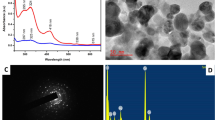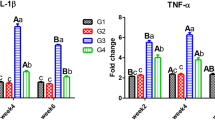Abstract
Adaptations of living organisms to the environment are formed and manifested at different levels, from molecular to biocoenotic. Nowadays, the metabolic antioxidant system (AOS) is considered the key part of the process of adaptation; its activation is considered a general response of biota to the negative effect of the environment. The usage of AOS components as biomarkers of the stress condition in hydrobionts has good prospects; it is actively applied in the monitoring of aquatic ecosystems. Here, the kinetics of the free radical formation in various zoobenthic species from the Yenisei River (amphipods, oligochaetes, leeches, and chironomids) and in the amphipods from the Us River (a small mountain river, the Yenisei tributary) is analyzed. The parameters of kinetics of radical formation were registered in vitro in the homogenates of hydrobionts tissues under the initiation of the oxidative stress by the hydrogen peroxide using luminol-dependent chemoluminescence. In amphipods, unlike other invertebrates, the antioxidative activity is characterized by two chemiluminescent peaks. In addition, the kinetics of free radical elaboration has interspecific and agerelated variability in amphipods. In Gmelinoides fasciatus Stebb., the peak of the free radical elaboration and their total number significantly exceeded these parameters for Gammarus sp. and Eulimnogammarus viridis Dybowsky in a 60-min period. The increase of the production of free radicals in E. viridis and Gammarus sp. and its decrease in G. fasciatus were age-dependent. A significantly higher production of free radicals has been registered in G. fasciatus and E. viridis inhabiting the zone of elevated anthropogenic load in the Yenisei River.
Similar content being viewed by others
References
Amado, L.L., Garcia, M.L., Ramos, P.B., Freitas, R.F., Zafalon, B., Ferreira, J.L.R., Yunes, J.S., and Monserrat, J.M., A method to measure total antioxidant capacity against peroxyl radicals in aquatic organisms: application to evaluate microcystins toxicity, Sci. Total Environ., 2009, vol. 407, pp. 2115–2123.
Andrianova, A.V., Biotic indices and metrics in assessment of the water quality of small rivers on the territory of Ergaki Nature Park (south of Krasnoyarsk krai), Contemp. Probl. Ecol., 2015, vol. 8, no. 3, pp. 358–367.
Andrianova, A.V., Dynamics of Yenisei River zoobenthos in lower tail water of Krasnoyarsk Hydropower Station, Vestn. Tomsk. Gos. Univ., Biol., 2013, no. 1 (21), pp. 74–88.
Andrianova, A.V., Aponasenko, A.D., Makarskaya, G.V., and Ponomareva, Yu.A., Complex assessment of the ecosystem of small mountain river in the region of construction of railway mainline, Vestn. Krasnoyarsk. Gos. Agrar. Univ., 2013, no. 8, pp. 97–103.
Anishchenko, O.V., Kravchuk, E.S., Gribovskaya, I.V., Gladyshev, M.I., and Sushchik, N.N., Distribution and migration of metals in trophic chains of the Yenisei ecosystem near Krasnoyarsk city, Water Resour., 2009, vol. 36, no. 5, pp. 594–603.
Bogdan, V.V., Nemova, N.N., Rukolainen, T.R., and Shklyarovich, G.A., Lipid composition of amphipods from the White Sea affected by various anthropogenic factors, Mater. IX mezhd. konf. “Problemy izucheniya, ratsional’nogo ispol’zovaniya i okhrany resursov Belogo morya,” Petrozavodsk, 11–14 oktyabrya 2004 g. (Proc. IX int. Conf. “Study, Rational Use, and Protection of the White Sea Resources,” Petrozavodsk, October 11–14, 2004), Petrozavodsk, 2005, pp. 47–50.
Gladyshev, M.I., Anishchenko, O.V., Sushchnik, N.N., Kalacheva, G.S., Gribovskaya, I.V., and Ageev, A.V., Influence of anthropogenic pollution on content of essential polyunsaturated fatty acids in links of food chain of river ecosystem, Contemp. Probl. Ecol., 2012, vol. 5, no. 4, pp. 376–385.
Gladyshev, M.I. and Moskvicheva, A.V., Baikal invaders have become dominant in the upper Yenisei benthofauna, Dokl. Biol. Sci., 2002, vol. 383, nos. 1–6, pp. 138–140.
Gordeeva, A.V. and Labas, Yu.A., Generation of active oxygen species by external surfaces of aquatic organisms, Tsitologiya, 2003, vol. 45, no. 3, pp. 284–289.
Gorokhova, E., Lof, M., Reutgarda, M., Lindstrom, M., and Sundelin, B., Exposure to contaminants exacerbates oxidative stress in amphipod Monoporeia affinis subjected to fluctuating hypoxia, Aquat. Toxicol., 2013, vol. 127, pp. 46–53.
Izmailov, D.Yu., Demin, E.M., and Vladimirov, Yu.A., Determination of activity of antioxidants by measurement of kinetic chemiluminescence, Fotobiol. Fotomed., 2011, vol. 7, no. 2, pp. 70–76.
Kalacheva, G.S., Gladyshev, M.I., Sushchik, N.N., Dubovskaya, O.P., Shulepina, S.P., and Ageev, A.V., Production of polyunsaturated fatty acids by zoobenthos in rivers with contrasting temperatures, Dokl. Biochem. Biophys., 2013, vol. 453, no. 1, pp. 308–311.
Livingstone, D.R., Oxidative stress in aquatic organisms in relation to pollution and aquaculture, Rev. Med. Vet., 2003, vol. 154, pp. 427–430.
Lushchak, V.I., Environmentally induced oxidative stress in aquatic animals, Aquat. Toxicol., 2011, vol. 101, pp. 13–30.
Makarskaya, G.V., Lopatin, V.N., and Tarskikh, S.V., Chemiluminescence analysis of the functional activity of phagocytizing cells of fish blood, Dokl. Biol. Sci., 2003, vol. 390, pp. 249–251.
Makarskaya, G.V., Tarskikh, S.V., Lopatin, V.N., Dolgikh, P.M., Kovalenko, V.V., Pryakhina, L.A., and Anan’ev, V.V., Functional Activity of blood cells in fish exposed to radiochemical industrial sewage, Dokl. Biol. Sci., 2006, vol. 407, no. 1, pp. 144–148.
Men’shikova, E.B. and Zenkov, N.K., Antioxidants and inhibitors of radical oxidative processes, Usp. Sovrem. Biol., 1983, vol. 113, no. 4, pp. 442–445.
Metodicheskie rekomendatsii MR1.2.2028-05. Ispol’zovanie neinvazivnykh metodov kontrolya antiokislitel’nogo balansa organizma v monitoringovykh gigienicheskikh issledovaniyakh (Implementation of Noninvasive Methods of Control of Antioxidant Balance of an Organism in Monitoring Hygienic Studies), Moscow, 2006, http://www.opengost.ru.
Nemova, N.N. and Vysotskaya, R.U., Biokhimicheskaya indikatsiya sostoyaniya ryb (Biochemical Indication of Fish State), Moscow: Nauka, 2004.
Perevozkina, M.G., Testirovanie antioksidantnoi aktivnosti polifunktsional’nykh soedinenii kineticheskimi metodami (Testing of Antioxidant Activity of Polyfunctional Compounds by Kinetic Methods), Novosibirsk: Sib. Assots. Kons., 2014.
Podkorytova, A.V., Strokova, N.G., Semikova, N.V., Litvinenko, A.I., and Kozlov, O.V., Freshwater shrimp Gammarus as the prospective source of biologically active substances, Rybn. Prom., 2010, no. 4, pp. 60–63.
Rudneva, I.I. and Shaida, V.G., Adaptive mechanism of early ontogenetic stages of fishes to oxidative stress, Mater. Vseross. konf. s mezhd. uchastiem “Fiziologicheskie, biokhimicheskie i molekulyarno-geneticheskie mekhanizmy adaptatsii gidrobiontov,” Borok, 22–27 sentyabrya 2012 g. (Proc. All-Russ. Conf. with Int. Participation “Physiological, Biochemical, and Molecular- Genetic Adaptive Mechanisms of Hydrobionts,” Borok, September 22–27, 2012), Borok: Inst. Biol. Vnutr. Vod, 2012, pp. 312–315.
Shakhmatova, O.A., Response of hydrobionts on stress factors in marine ecosystems, in Ekosistemy, ikh optimizatsiya i okhrana (Optimization and Protection of Ecosystems), Simferopol: Tavrichesk. Nats. Univ., 2012, no. 7, pp. 98–113.
Shatilina, Z.M., Sapozhnikova, E.A., Bedulina, D.S., Timofeyev, M.A., Gubanov, M.V., Zadereev, E.S., Pavlichenko, V.V., Axenov-Gribanov, D.V., and Protopopova, M.V., Comparative study of thermoresistances cellular mechanisms in representatives of the Gammarus lacustris Sars populations inhabiting saline Lake Shira (Republic of Khakassia) and a fresh water body in the Cis-Baikal Region, Dokl. Biol. Sci., 2010, vol. 434, no. 1, pp. 359–362.
Sushchick, N.N., Gladyshev, M.I., Moskvichova, A.V., Makhutova, O.N., and Kalachova, G.S., Comparison of fatty acid composition in major lipid classes of the dominant benthic invertebrates of the Yenisei River, Comp. Biochem. Physiol., Part B: Biochem. Mol. Biol., 2003, vol. 134, pp. 111–122.
Takhteev, V.V., Berezina, N.A., and Sidorov, D.A., Checklist of the Amphipoda (Crustacea) from continental waters of Russia, with data on alien species, Arthropoda Selecta, 2015, vol. 24, no. 3, pp. 335–370.
Timofeev, M.A., Activity of some antioxidant enzymes in Baikal amphipods: localization and size-age relationship, Sib. Ekol. Zh., 2007, no. 4, pp. 521–526.
Timofeyev, M., Protopopova, M., Pavlichenko, V., and Steinberg, C., Can acclimation of amphipods change their antioxidative response? Aquat. Ecol., 2009, vol. 43, pp. 1041–1045.
Timofeev, M.A., Shatilina, Zh.M., Bedulina, D.S., Protopopova, M.V., Pavlichenko, V.V., and Kolesnichenko, A.V., Comparative investigation of the cellular mechanisms of thermoresistivity in the Baikal and palaearctic species of eurybiont Amphipoda, Contemp. Probl. Ecol., 2008, no. 1, pp. 23–29.
Tkach, N.P. and Vysotskaya, R.U., The effect of oil pollution on lipid composition of amphipods, Fundam. Issled., 2007, no. 2, pp. 143–144.
Vladimirov, Yu.A. and Proskurina, E.V., Free radicals and cellular chemiluminescence, Usp. Sovrem. Biol. Khim., 2009, vol. 49, pp. 341–388.
Winstone, G.W. and Di-Giulio, R.T., Pro-oxidant and antioxidant mechanisms in aquatic organisms, Aquat. Toxicol., 1991, vol. 19, no. 2, pp. 137–161.
Author information
Authors and Affiliations
Corresponding author
Additional information
Original Russian Text © G.V. Makarskaya, A.V. Andrianova, S.V. Tarskikh, 2016, published in Sibirskii Ekologicheskii Zhurnal, 2016, No. 5, pp. 697–707.
Rights and permissions
About this article
Cite this article
Makarskaya, G.V., Andrianova, A.V. & Tarskikh, S.V. Peculiarities of the antioxidant activity of tissues of rheophilic zoobenthic species in accordance to the results of chemiluminescent analysis. Contemp. Probl. Ecol. 9, 574–581 (2016). https://doi.org/10.1134/S1995425516050103
Received:
Accepted:
Published:
Issue Date:
DOI: https://doi.org/10.1134/S1995425516050103




